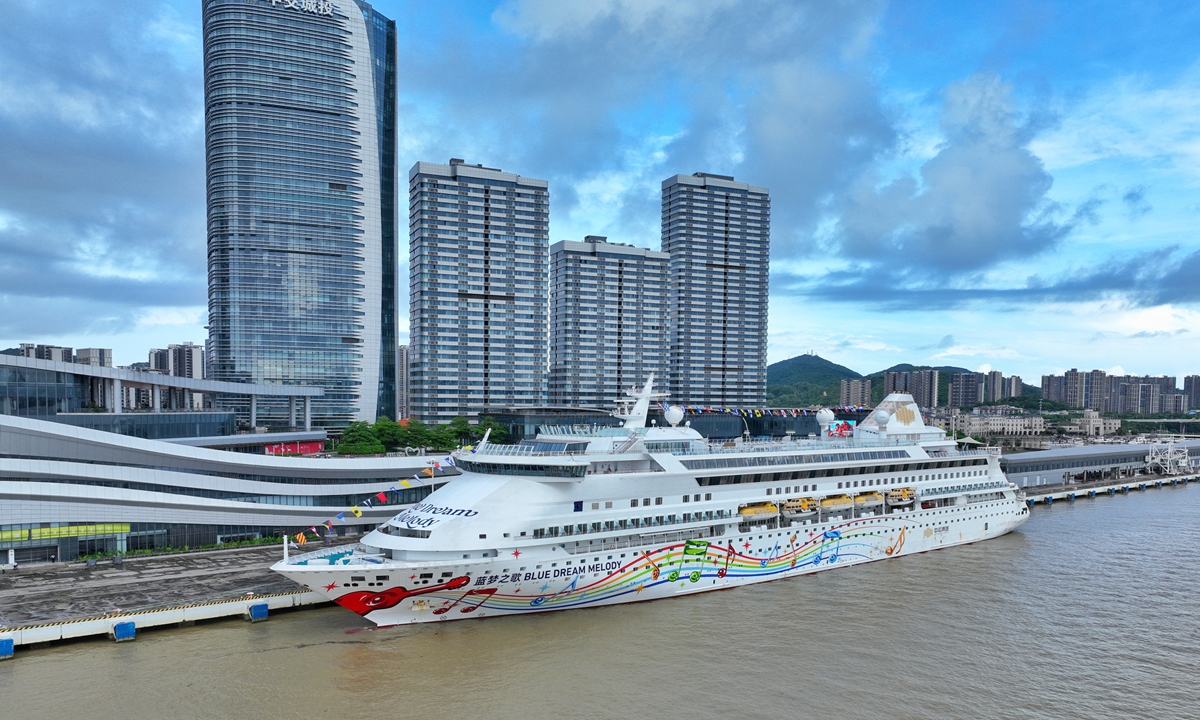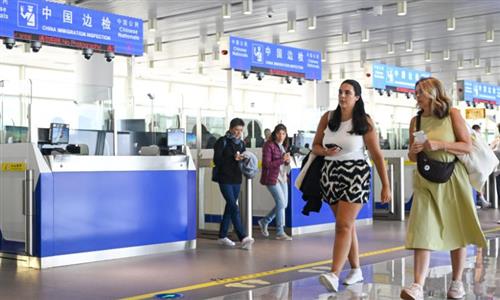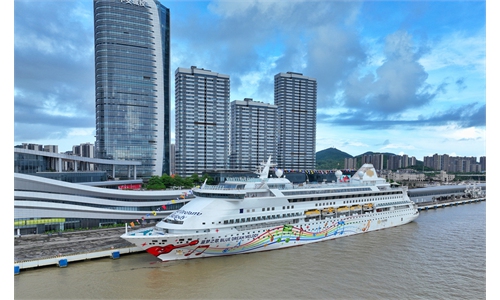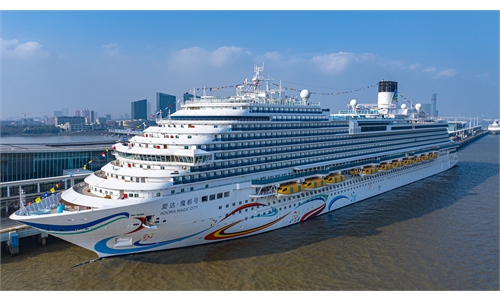
A cruise ship docks at the Guangzhou Nansha International Cruise port on June 25, 2024 in Guangzhou, capital of South China's Guangdong Province. Photo: VCG
A Chinese cruise brand has launched a 33-day Southeast Asia voyage from a domestic port, marking the recovery of China's cruise tourism market, boosting its global competitiveness, and filling a gap in long-haul options for domestic cruise lines.China's Blue Dream Cruises will launch a 33-night Southeast Asia voyage on November 26, departing from Shanghai and covering 15 ports across 10 countries and regions. With fares starting at 32,640 yuan ($4,570), the cruise will allow passengers to explore eight UNESCO World Heritage sites along the way.
This move benefits from visa-free policies in some Southeast Asian countries and demonstrates the ability of Chinese cruise lines to develop and operate extended itineraries, Xu Ying, general manager of Blue Dream Cruises, told a local media outlet.
"Most domestic cruises' itineraries last four to six days and focus on ports in Japan and South Korea, which has intensified homogeneous competition. In response, we are launching several mid-length cruises, ranging from one week to more than 10 days, and trying its first 33-night voyage," Xu said.
"We chose a smaller cruise ship with a capacity of 1,500 passengers as part of a differentiated strategy," Xu noted. "This allows us to dock at more ports without the restrictions that larger ships have to face."
Nearly one-third of the 33-night cruise tickets have been sold. Most passengers are between 45 and 70 years old, and some of the travelers are overseas Chinese seeking to retrace the paths their ancestors once took to Southeast Asia.
Blue Dream Cruises' voyage is just one example. This year, long-haul cruise options have expanded significantly, with Chinese cruise companies like Adora Cruises quickly ramping up their presence in the extended voyage market, industrial analysts said.
Adora Cruises launched a 13-day Southeast Asia itinerary at the end of July, which will depart from Xiamen, East China's Fujian Province. on December 6. The company's second domestically built cruise ship, set for delivery in 2026, will start South and Southeast Asia routes from Guangzhou in 2027.
"More long-haul and intercontinental cruises are on the way, signaling a strong future for extended itineraries. This trend opens new opportunities for domestic cruise lines to challenge international players and capture a larger share of the market," Jiang Yiyi, a vice dean of the School of Leisure Sports and Tourism at Beijing Sport University, told the Global Times on Sunday.
"As China's cruise market rebounds, the crowded short-haul sector needs innovation. The growth in long-haul cruises highlights the country's advancements in cruise technology and services. Aimed at mid- to high-end consumers, domestic cruise companies are adapting to post-pandemic demand and new travel habits, expanding both destinations and travel durations," Jiang said.
While China's cruise market is still rebounding, success in the long-haul segment could prompt more foreign operators to move off the sidelines and boost their routes and investments in the country, according to Jiang.
Data from the Chinese Ministry of Transport showed that in the first half of this year, nearly 500,000 passengers traveled on 23 cruise ships. This marked a recovery to more than half of the 2019 levels, with passenger numbers in the second quarter surging by almost 60 percent compared with the first quarter.



